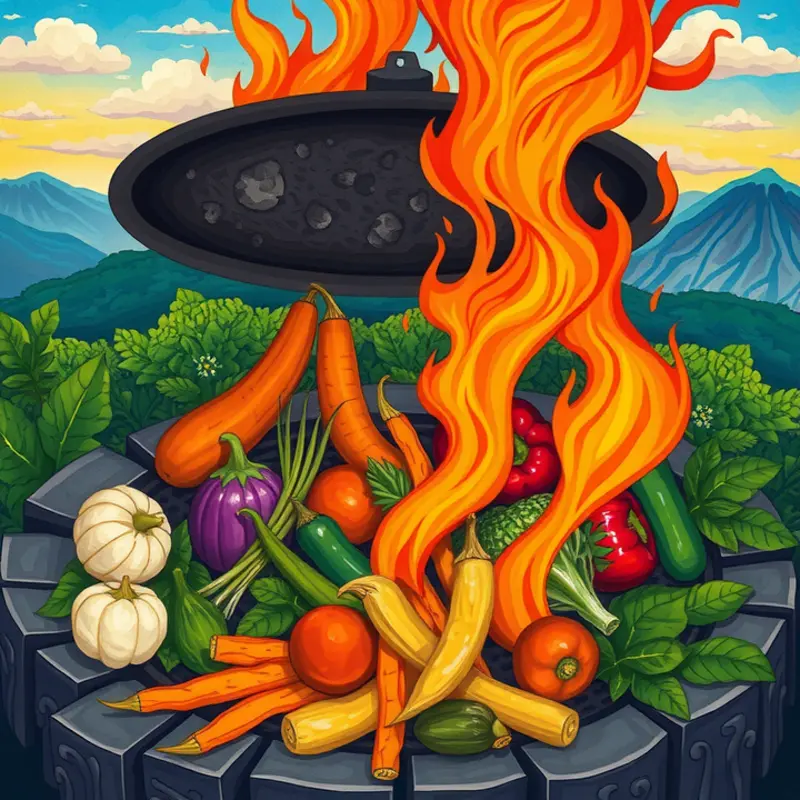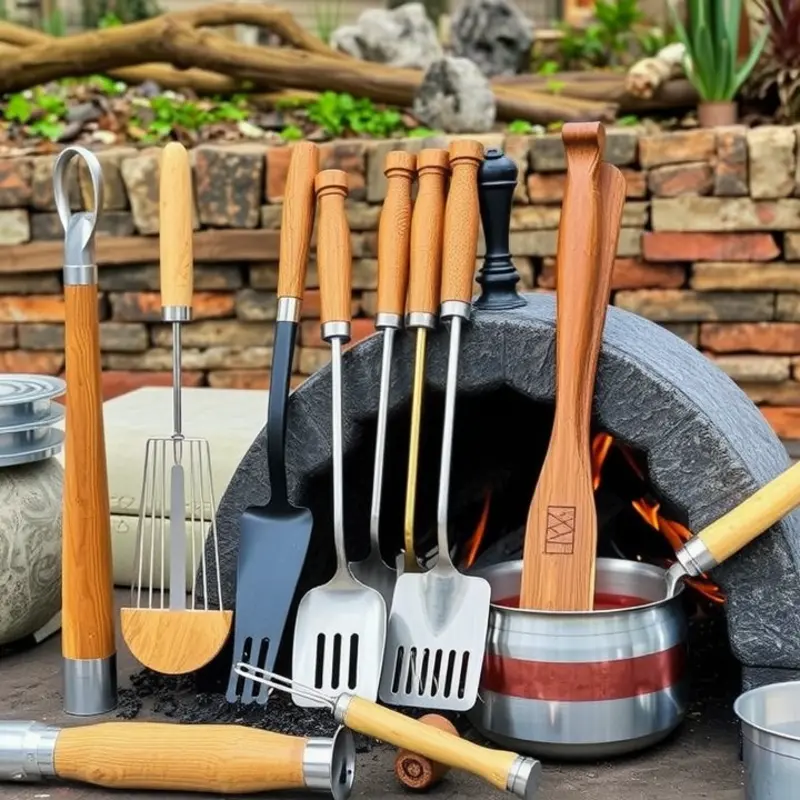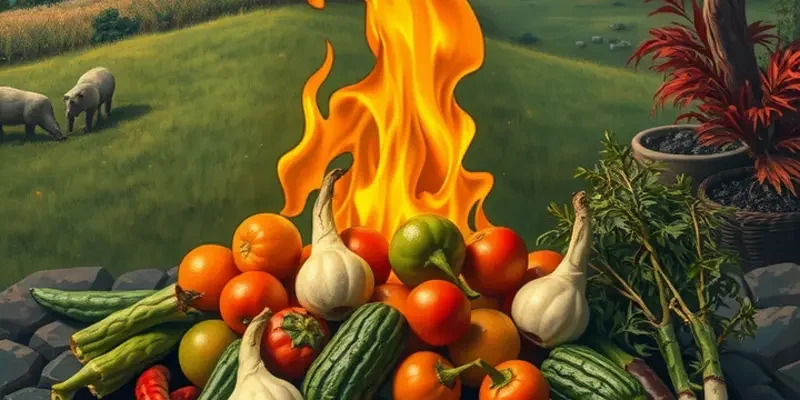The crackling sound, the aromatic smoke, and the warm glow of burning embers evoke a culinary experience steeped in history. Open-fire cooking, a technique revered across cultures, transcends mere sustenance; it signifies a bond to nature, community, and ancestral traditions. From the smoky barbecues of the American South to the sizzling tandoors in India, this method of preparation ignites passion and flavors that are as rich as the stories behind them. Join us on a spirited journey as we celebrate the artistry and history of cooking over open flames.
The Flames of Tradition: A Global Overview

In many cultures, the art of open-fire cooking remains a cherished technique that links past and present. It celebrates not only the unique flavors imparted by fire but also the social bonds formed around communal meals. From the earthy embrace of a Peruvian pachamanca to the joyous atmosphere of a South African braai, each tradition brings its distinct charm and culinary artistry.
In Peru, the pachamanca cooking technique is a testament to ancient connections with the earth. Traditionally prepared by heating stones in a pit, this method slow-cooks a variety of ingredients, primarily meats and tubers, which are then covered with earth. The result is a meal infused with the earth’s own warmth and flavors, drawing individuals together for a feast deeply rooted in ritual and gratitude.
Traveling halfway across the world to South Africa, the braai stands out as a vibrant cultural event. It’s more than just grilling over an open flame. A braai is a celebration at its core, often held on weekends when friends and family gather to enjoy grilled meats and sausages. The distinct smoky aroma from wood or charcoal fires sets the stage for festive interactions, marking the braai as a symbol of South African hospitality and leisure.
Further north, in the Nordic countries, open fire cooking takes a different form. The method of ‘plank grilling’ involves cooking fish or meats on wooden planks over an open fire. This ancient practice imparts a unique flavor from the wood into the food, reflecting the landscape’s natural richness in each bite. This technique not only enhances taste but also celebrates a connection to the local environment.
In Japan, the art of robatayaki involves cooking skewered foods over hot charcoal. Often found in intimate izakayas, this method offers a cozy and interactive dining experience. The subtle yet impactful smokiness characterizes the food and enriches communal dining, bringing people together in appreciation of both flavor and craftsmanship.
Across continents, the flavors achieved through these fire-cooking methods are distinctive, carrying the imprints of their geography and culture. These methods serve as culinary expressions of identity, preserving tradition while continually influencing modern practices. For instance, consider how the cooking techniques from ancient pilgrimage routes have contributed to today’s global cuisine knowledge base. For more insights, visit Foods of Ancient Pilgrimage Routes.
Open-fire cooking traditions not only celebrate individuality but also share a common thread of bringing people together. Whether it’s a festive gathering or quiet reflection by the fire, these practices remind us of the stories each dish tells, the bonds it reinforces, and the simple joy of cooking with flame.
Techniques and Tools: Craftsmanship in Every Bite

Cooking over an open fire is an art form, blending tradition and technique to create flavors that captivate the senses. This ancient practice relies on tools crafted from enduring materials like clay, stone, and metal, each contributing unique characteristics to the culinary experience.
Imagine a rustic grill, its heavy cast iron grid placed over an open flame, imparting smoky char to marinated meats. The design of these grills, often passed down through generations, showcases the artisanal craftsmanship involved. The grids are thick enough to withstand the heat yet spaced widely to allow the flames to kiss the food, embedding a rich depth of flavor.
Clay pots, a staple in many cultures, transform simple dishes into culinary masterpieces. These earthen vessels conduct heat slowly, coaxing deep flavors from ingredients. Using such pots requires patience; with time, the food infuses with the natural earthiness of the clay, enhancing the overall profile of the dish. By simulating a gentle stewing process, these pots are perfect for soups or slow-cooked stews rich in spices and aromas.
Stones, though less common today, hold a revered place in fire cooking traditions such as those in Hawaii and the Nordic regions. The technique involves heating stones until they’re blazing hot before laying food directly on them or using them to line a pit. This method imparts an irreversible sear, locking in juiciness and flavor. The key is to choose stones that are dense and heat-retentive, ensuring even cooking.
Metal skewers present another dimension of fire-cooking craftsmanship. They are particularly popular for dishes like shish kebabs, where vegetables and proteins are threaded onto skewers and roasted directly over flames. The skewer’s thickness and material, usually stainless steel or bamboo, determine the cooking speed and flavor development. In many cultures, the skewers themselves are intricately carved or embellished, reflecting the artistry of the local craftsmen.
For those eager to bring these techniques into their modern kitchens, consider building a small tabletop grill or experimenting with clay pot recipes indoors. To replicate the stone cooking effect, try a cast iron skillet heated in your oven or over a gas stove. Whatever your approach, the key lies in respecting the source of your heat and the natural flavors of your ingredients.
Embrace these age-old methods with simple recipes that highlight the essence of fire cooking. A Mediterranean-inspired grilled eggplant, seasoned with garlic and olive oil, can be elevated when cooked over open flames. Place slices directly over a grill until they develop a charred, tender finish. Alternatively, create a clay pot dish based on Moroccan tagines, where lamb, apricots, almonds, and a blend of spices slowly harmonize to create a feast for the senses.
Engaging with open-fire cooking not only provides a sensory-rich culinary experience but also connects us with millennia-old traditions. For those interested in sustainable culinary practices, exploring eco-aware cooking strategies offers additional insights into reducing carbon footprints while enjoying these classic techniques. The craft of creating with fire is as timeless as the flavors it captures, a bridge between our past and future in the kitchen.
Final words
Open-fire cooking is more than a culinary technique; it is a celebration of culture, community, and sustainability. The enchantment of flames transforms simple ingredients into complex flavors that tell stories across generations. As food enthusiasts, recognizing and engaging with these traditional practices fosters a deeper appreciation for global cuisines. Embrace the art of open-fire cooking, and let the flames guide your culinary adventures. Ignite your passion for food and connect with the timeless traditions that shape our gastronomical landscapes.








